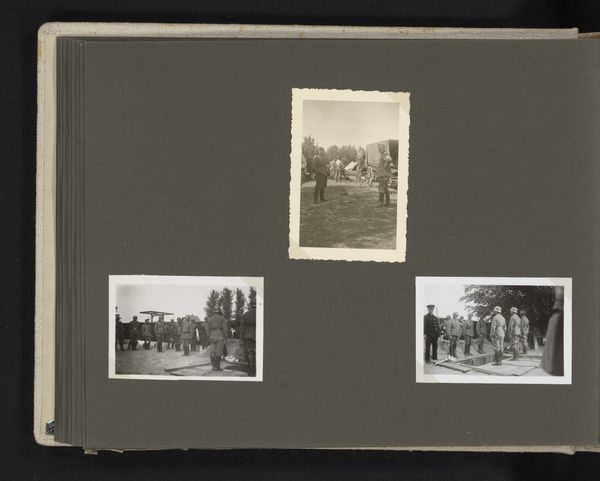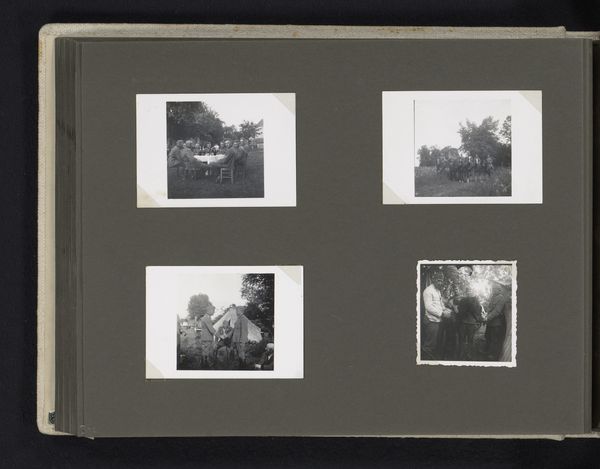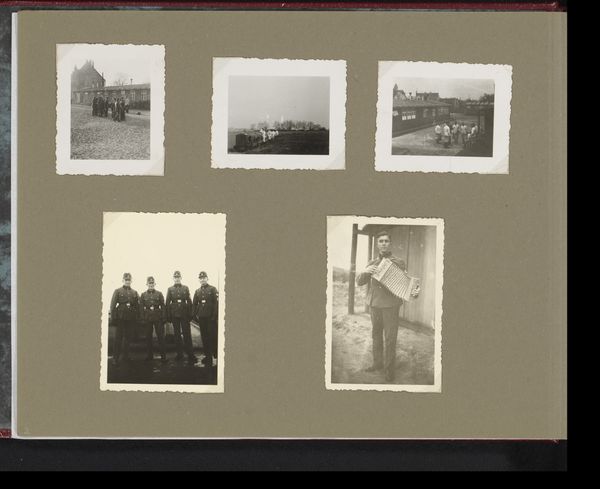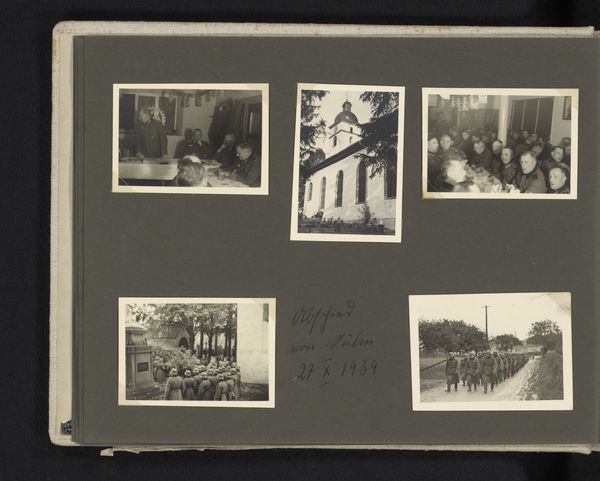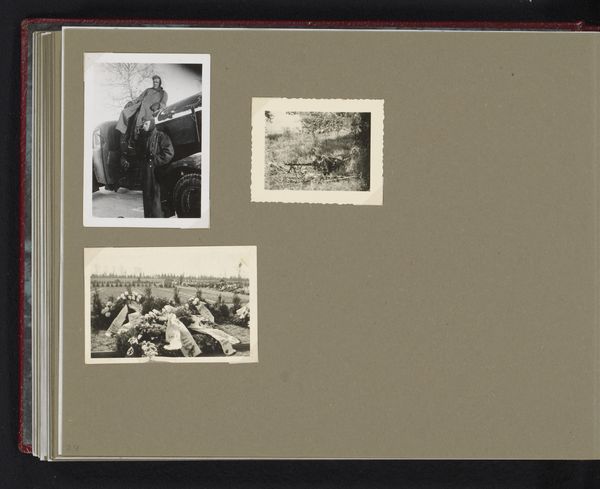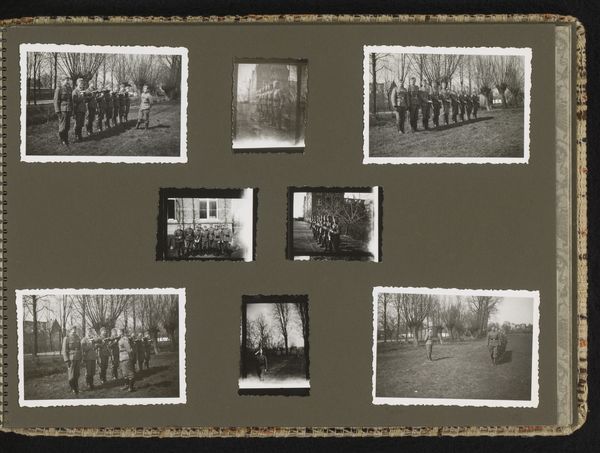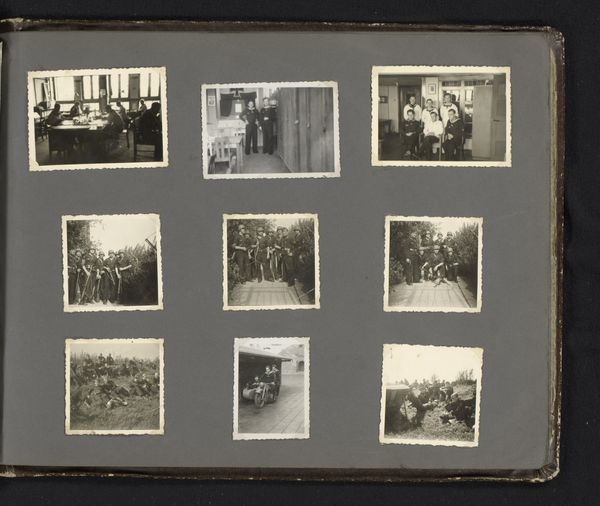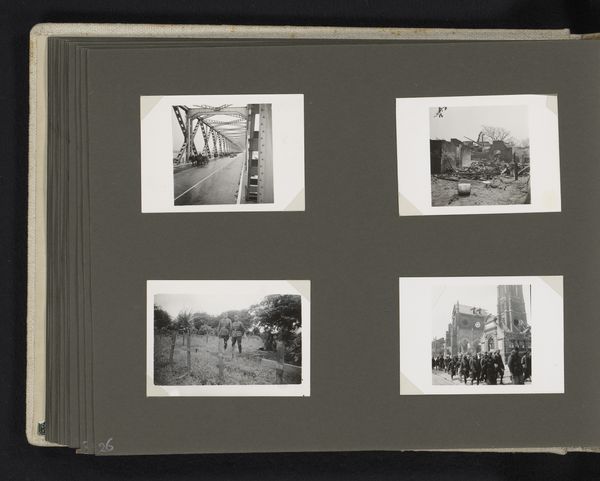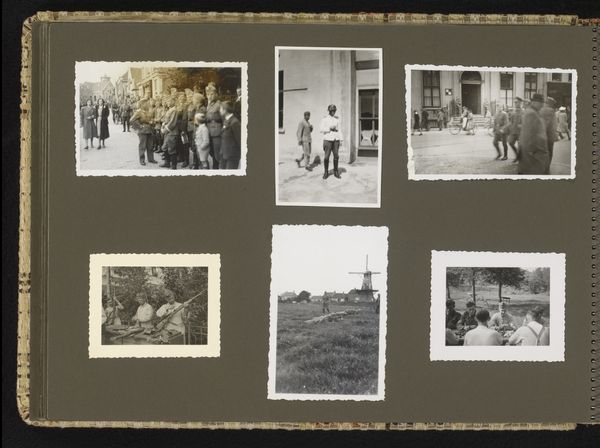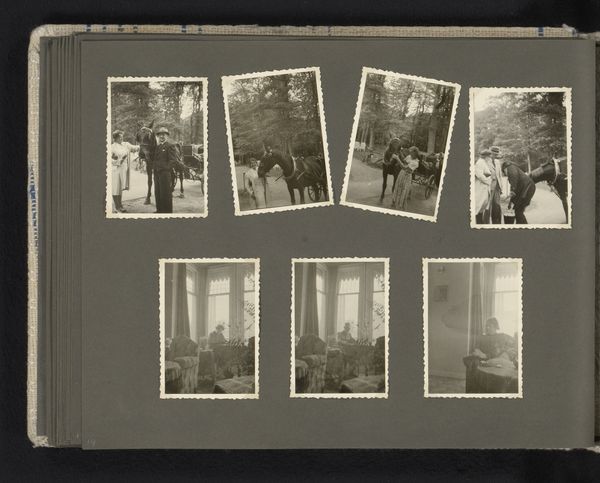
Dimensions: height 60 mm, width 90 mm, height 223 mm, width 245 mm
Copyright: Rijks Museum: Open Domain
Curator: The photographic collection, entitled "Krijgsgevangenen" meaning "Prisoners of War," dates from 1940-1946, during and immediately after the Second World War, and it's currently held here at the Rijksmuseum. It's presented as gelatin-silver prints within an album. Editor: Well, looking at it now, the arrangement immediately strikes me. These aren't just scattered images; they're deliberately curated, telling a specific story. The varying sizes and compositions evoke a chaotic, fractured feeling reflective of the war period. Curator: Exactly. We can view this work as a form of early photojournalism. Beyond mere documentation, there’s an inherent commentary on the socio-political implications of war and imprisonment. Note the range of individuals captured – does that broaden our perspective on who experiences war, or how? Editor: Absolutely, let's examine the top-left print, that solo portrait. It confronts you with the individual experience amid the broader conflict. And placing it near group shots creates a really palpable tension between the personal and the collective trauma. I’d be interested in exploring how the subject's race might have impacted their experience of captivity during this period. Curator: That's an important lens. And think about the album format. Before digital media, the album was a powerful means of controlling narratives. This suggests an active construction of memory, perhaps even propaganda, in how these images are sequenced and presented to a viewer. Editor: Right. Considering the placement of the image showing building ruins. This might represent not only physical destruction but also a symbol of societal breakdown and the displacement inherent to wartime. How would displaying this album then play within national identity, both at the time and later? Curator: Excellent question. I think reflecting on how we encounter historical narratives presented by institutions becomes a central aim of analyzing works like this one. The archive’s structure reveals layers of authority and bias. Editor: I agree completely. Thinking about it all, it is fascinating to consider the role and effect of photographs to communicate trauma and reflect on social disruption. Curator: Yes. I'm glad we’ve managed to start deconstructing how social memory is shaped through such visual artifacts. It provokes some heavy thoughts.
Comments
No comments
Be the first to comment and join the conversation on the ultimate creative platform.

